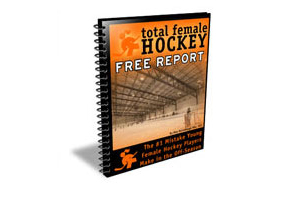How Often Do You Touch The Puck?
Do you know how much time you – as an individual player – actually spend touching the puck in a game?
Most female hockey games range from having between 30 to 60 minutes of actual playing time. How much of that time do you have the puck on your stick?
In a typical 60 minute NHL game, a superstar player, one who gets a lot of minutes and is a consistent contributor on the offensive side of the puck, only has the puck on their stick for 45 seconds total. A more defensively minded player or one that gets limited minutes, will have it far less than that.
During the World Junior Championship Game broadcast last night, one of the announcers said that Trevor Zegras from Team USA had direct possession of the puck for 30 seconds after the 1st period of play. That’s a lot of time – but if you watched the first period and saw how often he was on the ice and how much possession Team USA had, that stat makes perfect sense. His ability to dominate and create with the puck has got to be one of the main reasons he was named MVP of the entire tournament.
Now think about how that translates over to your game. Even if you’re a total rockstar out there like Zegras, odds are you’ve only got the puck on your stick for less than a minute of a game.
Now you know why they say “defense wins championships” and why your coaches are constantly harping on you about the importance of your play without the puck.
With the teams I coach, we focus a lot of time early in the season on our play without the puck and I narrow this down even further to focus on defending in 1 on 1 situations.
This is a critical skill for both forwards and defensemen. Being able to judge your opponent’s speed, angle of attack, degree of puck control and their options to share or shoot the puck isn’t easy. Forwards need to do this while fore-checking and back-checking, and Ds can’t reach an elite level without being able to dominate 1 on 1s. And for the goalies, you’re always 1 on 1 with your shooter so this is something you’re constantly focused on.
The first and most important skill needed for defending 1 on 1s is skating. You need to have “good feet” to be able to read and react to what the puck carrier is doing. If you struggle with pivoting in one direction or in transitioning from backwards to forwards, your ability to defend will suffer. All players, regardless of position, must be proficient at all skating skills – forward and backward stride, tight turns, pivots, stops on two feet and one foot using both inside and outside edges, edge work etc etc etc. If you struggle at any of these skills, you will get exposed while defending.
The next most critical skill is timing. You have to learn how to read the speed, angle of attack, degree of possession and options to move the puck of your opponent. That’s a lot to ask when there are 9 other skaters on the ice and you’re trying to pick up on everyone’s cues. This is something that can only be learned and perfected with experience. Whether you are 8 or 18, angling drills should be a part of your team & individual training. The basic techniques of angling can be taught off the ice (hand positioning, how to make safe and effective contact etc) but there is no substitute to practicing these skills on the ice. Players have to progress from slow speeds to game speeds, and from defending one player to reading the entire play. This isn’t something that can be glazed over in a single practice. Since most of the game is played without the puck, this has to be a mainstay of your on-ice training no matter what point you’re at in the season.
Don’t get me wrong here. I know we all love having the puck on our stick. We want to impact the game every time we hit the ice. But you’ll play many many shifts in your hockey career where you never even come close to touching the puck. And your effectiveness in those shifts is as important as what you do when you do have the chance to touch the puck. Players who are great when they don’t have the puck don’t always stand out on the ice at first. But all good coaches, and certainly all the scouts for the next level, value this ability greatly and will look for players who know exactly where to be and what to do when they don’t have puck possession.
Becoming an expert in this area takes lots of experience learning the skills in practice and executing in games. It is also a skill that you can learn a great deal about by watching game footage. The next time you watch a game, pick one player on the ice that you’re going to focus on the whole time and make special note of what they do when they don’t have the puck. You could even go back and find the recording of last night’s final game online and rewatch Zegras’ dominance with the puck as well as all the hard and smart work he did without the puck to help his team win the World Championship last night.
Work Hard. Dream BIG.
Your friend and coach,
Kim
Kim McCullough, MSc, YCS
Director & Founder, Total Female Hockey

